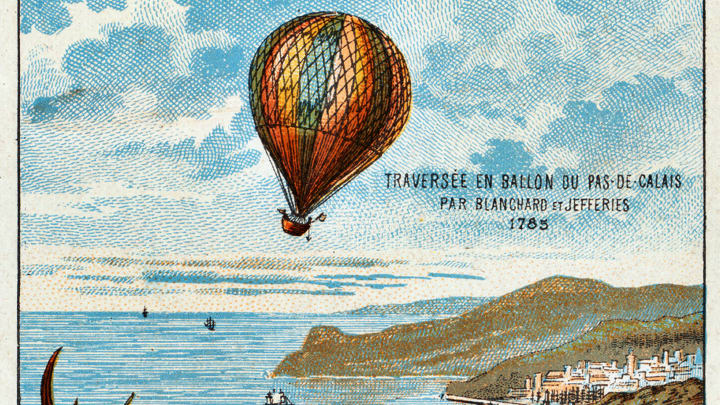8 Ways to Cross the English Channel (Without a Boat)

The English Channel (La Manche) is the part of the Atlantic Ocean that separates Britain from France. The actual channel is the length of the entire southern coast of England, and contains many inhabited islands. When people attempt new ways of crossing the channel, they do it at the Strait of Dover, which is the narrowest point of the channel at only 34 kilometers (21 miles) between Dover and Calais. The cachet of crossing the channel is way out of proportion to its distance. There is something symbolic about making the trip, particularly if you do it in a new way.
1. Balloon
The first channel crossing by air was in the 18th century. French balloonist Jean-Pierre Blanchard and American doctor John Jeffries took off from Dover Castle in a hydrogen balloon on January 7th, 1785. The two had to pitch almost everything they took overboard in order to stay afloat, but landed unharmed at Guînes, France about two and a half hours later.
2. Swim
The first man to swim the channel was Captain Matthew Webb in 1875. It took 21 hours and 45 minutes. Webb trained for two years and made an unsuccessful attempt a couple of weeks before his historic crossing. The course he took was 39 miles, due to strong currents. He became a celebrity and a professional swimmer afterward. Webb died while attempting to swim the Whirlpool Rapids under Niagara Falls in 1883.
The first woman to swim the channel not only broke ground for her sex, but beat the time of the five men who preceded her by at least two hours! American swimmer Gertrude Ederle had already won a gold medal and two bronze medals at the 1924 Olympics. On August 6th, 1926 she swam from Cap Gris-Nez, France to Kingsdown, England in 14 hours and 30 minutes. That speed record stood until 1950.
3. Airplane
The first flight over the channel in an airplane came in 1909 when French inventor Louis Blériot piloted a monoplane he designed from Calais to Dover in 37 minutes. He was one of three competitors who answered a challenge from the Daily Mail, which had offered a thousand pounds ($5,000) to the first man to fly the channel.
4. Pedal
The first human-powered flight across the channel occurred in 1979 when the Gossamer Albatross piloted by cyclist Bryan Allen flew over the channel in 2 hours and 39 minutes. It was powered by pedals that turned propellers. The Gossamer Albatross was designed by Paul B. MacCready and his team. MacCready won his second Kremer Prize (worth £100,000) with the channel crossing.
5. Train
Since May 6, 1994 it is possible to cross the channel by train. It was on that day the Channel Tunnel (Le tunnel sous la Manche) or "Chunnel" officially opened. A Eurostar train left Folkestone carrying Queen Elizabeth II, and another left Coquelles carrying French president Francois Mitterand. In addition to passengers, trains carry trucks and other vehicles underneath the Strait of Dover.
6. Skydive
In 2003, Australian Felix Baumgartner became the first person to skydive across the channel. He jumped out of a plane over Dover and landed in Cap Blanc-Nez, France 14 minutes later. Baumgartner wore an aerodynamic suit with a 6-foot carbon fin attached to guide his flight.
7. Jet Pack
Swiss pilot Yves Rossy flew the channel last week using a jet pack. He launched from a plane high over Calais and flew to Dover in just ten minutes. Rossy, known as the Rocket Man, uses a jet wing powered by four kerosene-burning engines.
8. Human-powered Zeppelin
The quest for new ways to cross the English Channel never ends. 39-year-old Stephane Rousson made an attempt this past weekend to cross the channel in a pedal-powered zeppelin. The French amateur pilot was 11 miles from his goal in Wissant, France when the wind direction changed and he had to abort the flight. Rousson was inspired by a scene in the movie E.T.